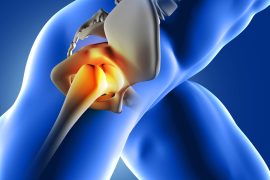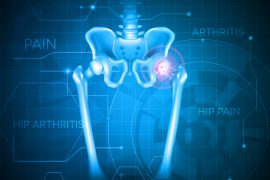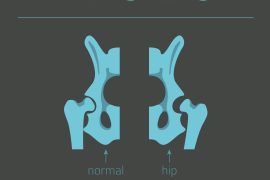By far the second most common form of joint surgery, after total knee replacement is total hip replacement or to put it medically, total hip Arthroplasty. It is also not only one of the most successful joint surgeries performed today but, also one of the most effective in reducing the pain and resulting side effects of having damaged hip joints. While this can seem like a daunting process for both patients and their families, the hip is an important joint that helps us conduct the most basic activities of our daily lives like walking, jumping, running etc. When the joint is diseased, whether due to osteoarthritis or injury, it reduces the patient’s ability to be mobile. However, truth be told, there is little cause for worry when it comes to total hip replacement surgery. The rate of complications is low and with proper care, the patient can soon regain mobility. That aside, the reliable pain relief and sizable functional improvement that arthritis patients experience post-surgery make it extremely beneficial for those suffering from intense pain and restrictive movement. Around 3 lakh Total Hip Replacement procedures are carried out globally every year. Still concerned? Here’s some information to help you make this decision.
There is no difference between hip replacement and total hip replacement.
Depending on the components of the hip joint that are going to be replaced, the procedure can be called as either total hip replacement surgery or partial hip replacement surgery. As you must already have learned from your orthopedic surgeon, the hip joint is a ball and socket joint, which means a ball-like structure, in this case, the head of your thigh bone or femur fits in a socket or the pelvic bone or acetabulum, to form a joint. With Total Hip Replacement orthopedic ball and the socket is replaced, while partial hip replacement only requires the ball or the head of the femur to be replaced.
Now both surgeries are called hip replacement surgeries, differing only in technicality, but Total Hip Replacement surgery is most common as partial replacement is considered sub-optimal and less recommended. Another point to be noted is that bilateral hip replacement is not the same as Total Hip Replacement. The former requires surgery on the hip joint of both legs while Total Hip Replacement simply requires replacement of the ball and socket components of any one leg.
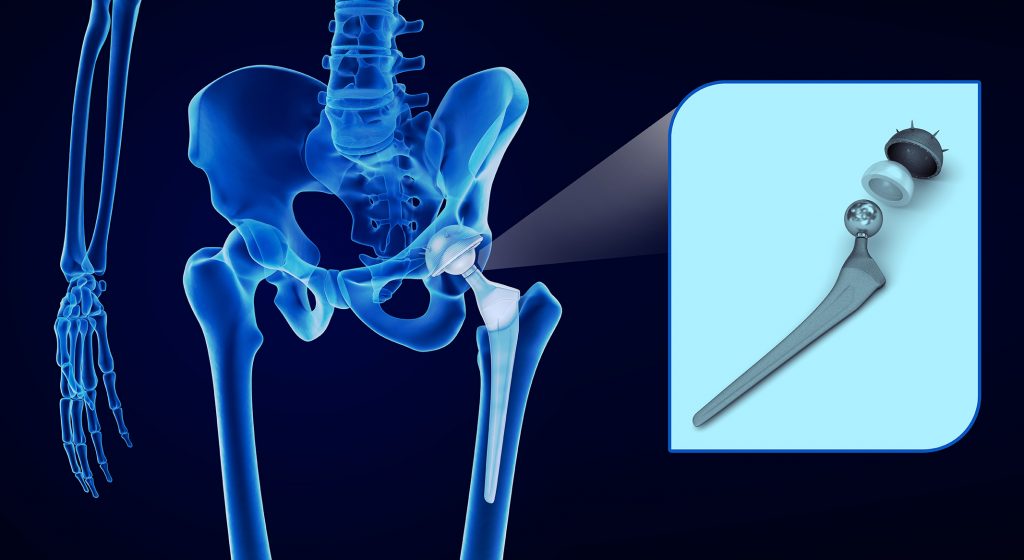


Anyone with significant joint damage is a candidate for total hip replacement
Living with hip pain can be a challenge for anyone, young or old. Whether it is through arthritis or trauma, a hip injury can result in intense pain while carrying out regular activities. Even resting may not bring relief as the hip may be stiff and painful. While medicines, lifestyle modifications, and walking aids may help to a large extent, in severe cases, surgery is the best option.
Since 1960, advances in joint replacement operative techniques and technology have greatly improved the efficacy of total hip replacement.
Getting a Total Hip Replacement is the best option in case of significant pain and mobility reduction.
Every patient is different and their need for surgery may depend on various factors. That being said, any patient suffering from chronic hip pain which is hindering their daily activities and for whom other non-invasive methods of pain reduction have proved to be ineffective can be considered as a candidate for Total Hip Replacement.
Total Hip Replacement is recommended if:
- The patient is in significant pain. If the hip pain is preventing the patient from conducting their daily activities, interfering with their sleep and rest and restricts their hip and knee movements, then surgery may be the best way out. Ditto, if the patient requires walking aids to move or cannot stand on their aching leg even for a minute without support.
- Painkillers no longer work: In some situations, the pain may no longer be controlled by the use of painkillers or the patient starts to experience severe side-effects from said painkillers.
- Increased stiffness: Stiffness in the hip joint that prevents one from going about one’s daily life may require the use of Total Hip Replacement for long-term relief.
- Doctor’s recommendation: If less invasive and conservative treatment efforts fail, then a doctor will recommend a Total Hip Replacement.
- The situation is becoming unbearable: Severe pain can be physically, mentally, and emotionally traumatizing, especially for the elderly. If the patient feels that they can no longer live with the pain, then Total Hip Replacement is by far the best option to help them heal.
Here’s what one can expect from a Total Hip Replacement surgery
Total Hip Replacement involves the following steps:
- The damaged ball of the hip joint is taken out and replaced with a metallic stem and is placed into the femur’s hollow centre. The stem could either be cemented or “press-fit” into the bone.
- A metal or ceramic ball then replaces the worn out femoral head which was removed. This artificial ball is positioned on the stem’s upper part.
- The cartilage surface of the socket which is damaged gets replaced with a metallic socket. In order to hold the new socket in place, screws or cement is used.
- Finally, a metallic or plastic spacer is positioned between the new implants to permit a smooth gliding surface for frictionless movement of the joint.
How soon you can be discharged depends on your doctor
As much as you would like to go home and get back on your feet, Total Hip Replacement surgery will require you to stay at the hospital for a few days. The length of your stay and discharge will depend on your doctor’s recommendation.
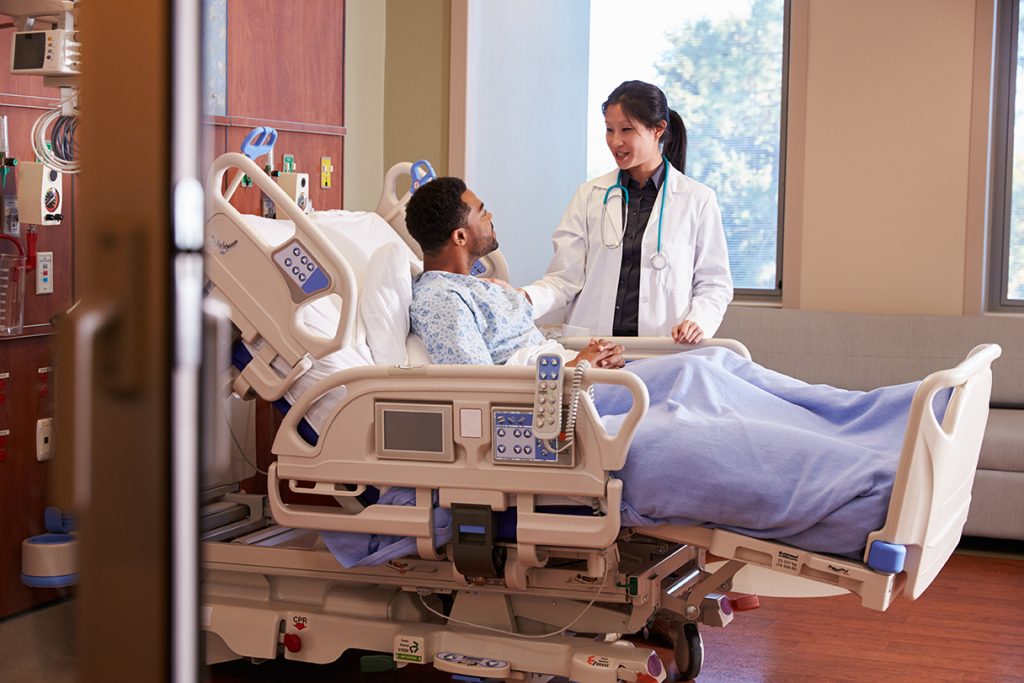


One can expect to be walking freely within 6 weeks post-surgery
Independent walking may not be possible immediately after the surgery. However, post-physical therapy, most Total Hip Replacement patients can find themselves walking with a walker or on crutches on a levelled surface. They can even navigate through stairs in both ways. Most patients require the walker for 2 weeks maximum. Getting back to walking depends on your recovery rate, though free and easy movement will be regained fairly soon after the pain decreases. Resumption of normal activities, including driving, can be achieved well within 6 weeks post-surgery. Normal recreation can be resumed 12 weeks post-surgery and one can be expected to be completely back to one’s normal routine within 6 months post-surgery.
Physiotherapy is an important part of the recovery process
Physiotherapy is extremely important post- Total Hip Replacement. The therapist will not only assist you with the exercises taught in the hospital but will also ensure that you can walk safely in your house. A physiotherapist will also help you keep a check on post-surgery dos and don’ts and be the ones assessing your need for a walker. Once the patient is moving freely at home, the physiotherapy sessions will be shifted to a clinic to further increase the strength of the muscles around the joint.



Patients will require around-the-clock care for at least 6 weeks post-surgery
In the initial days after surgery, most patients will be fatigued from the after-effects of anesthesia and painkillers and may require help with their daily activities. This phase may last for up to 6 weeks. So if you or your loved ones live alone, it is best to arrange for care during the recovery period.
Expect to be on painkillers for at least 4 weeks
Pain is an unfortunate side effect of any surgery and one does need to take painkillers to control it. Total Hip Replacement patients mostly require painkillers in the initial 2 to 4 weeks post-surgery, post which they can sit down with their surgeon to discuss further pain relief strategies. A large majority of patients can expect excellent pain control after 4 to 6 weeks.



So, as you can see, undergoing a Total Hip Replacement procedure is nothing to worry about. With a good surgeon and the availability of excellent implants, a hip arthritis patient can easily regain their mobility and previous quality of life within months.


